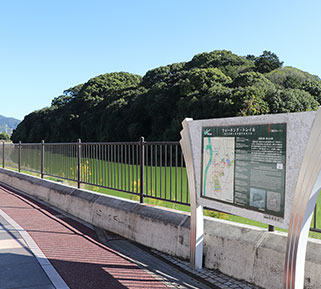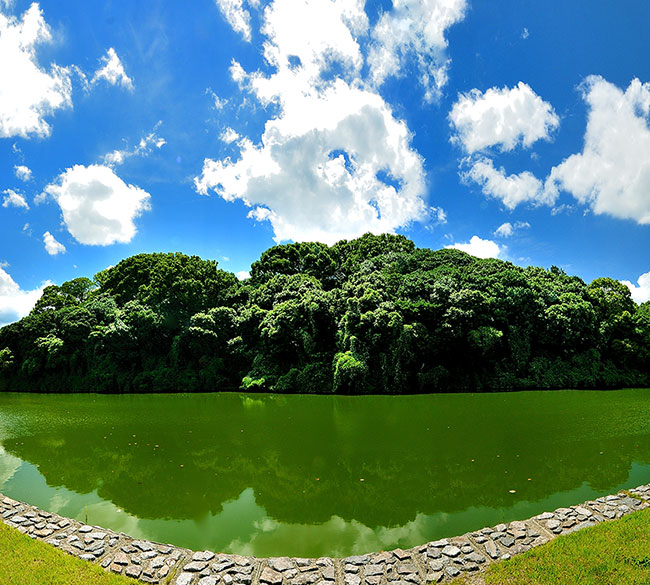Sightseeing Model Course 03 Ageless Kofun Road Course

- TOP
- Walk and get to know the charms of the ancient world Ageless Kofun Road Course
MODEL COURSE 03
Time required4h
Ageless Kofun
Road Course:
Walk and Discover
the Enchanting
Ancient World
This is an ageless kofun road that goes around the burial mounds of the Furuichi Kofun Group
consisting of Habikino City and Fujiidera City.
A healing course where you can enjoy nature from season to season.
-
Osaka StationTakawashi Station
- 10:10 To Yuryaku-tenno-ryo Kofun
- 10:40 Walk around Tsudo-Shiroyama Kofun
- 11:00 Tumulus guidance building Visit Mahora Shiroyama
- 11:40 To Emperor Chuai-tenno-ryo Kofun
- 11:50 Visit AICEL Shura Hall
- 13:20 To Ninken-tenno-ryo Kofun
- 13:30 To Minegazuka Kofun
- 13:50 To Hakuchoryo Kofun

Takawashi Station (Habikino City)
Approx. 10-minute walk
10:10
Visit the imperial tomb of
Emperor Yuryaku that is written as
"Wabu," one of the five kings of Wa
Yuryaku-tenno-ryo Kofun
The mausoleum of Emperor Yuryaku is described in Kojiki (Records of Ancient Matters) as being "in Takawashi of Tajihi in Kawachi."
At present, the Shimaizumi Maruyama Kofun that is 75m in diameter and the Shimaizumi Hiratsuka Kofun that is 50m long on one side form a keyhole-shaped tumulus, and they have been determined as the Yuryaku Tenno Tajihino Tawashinohara no Misasagi.
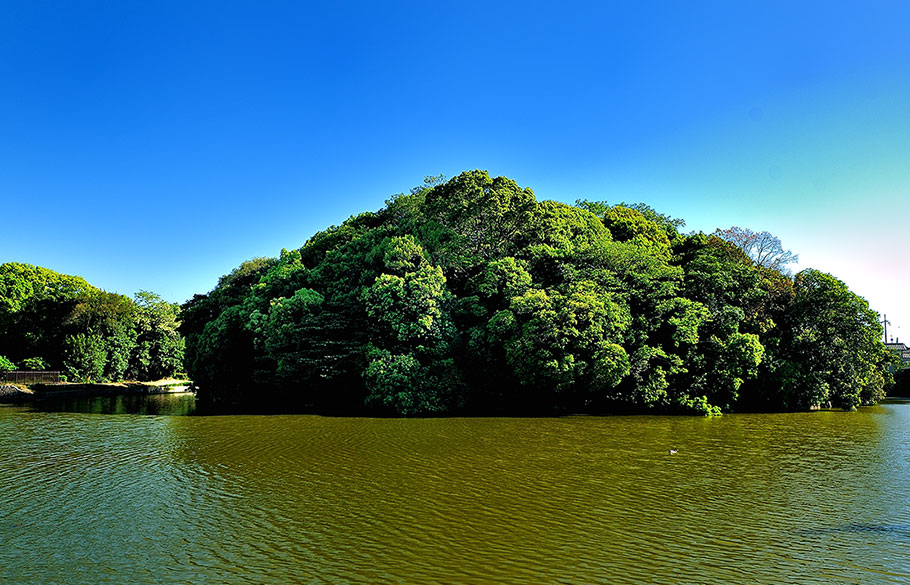
Approx. 25-minute walk
10:40
To Tsudo-shiroyama Kofun,
the largest large keyhole-shaped
tumulus
in the Furuichi Kofun Group
Tsudo-shiroyama Kofun
This is the oldest massive keyhole-shaped tumulus in the Furuichi Kofun Group that was constructed in the latter half of the 4th century. The length of the burial mound is 210m and it has a double moat and levee. The water bird-shaped haniwa excavated from the inner moat is designated as a national important cultural property. The surrounding area is a place for Fujiidera citizens to relax and enjoy seasonal flowers such as rape blossoms, Japanese irises, cosmos, and plums. Excerpt from Fujiidera Tourism WEB, an official website of the Fujiidera City Tourism Association
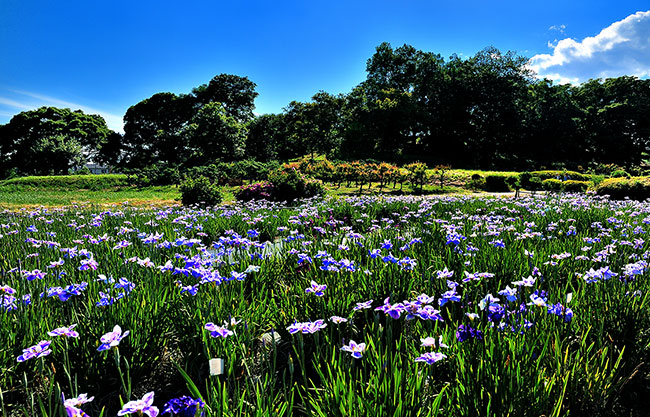
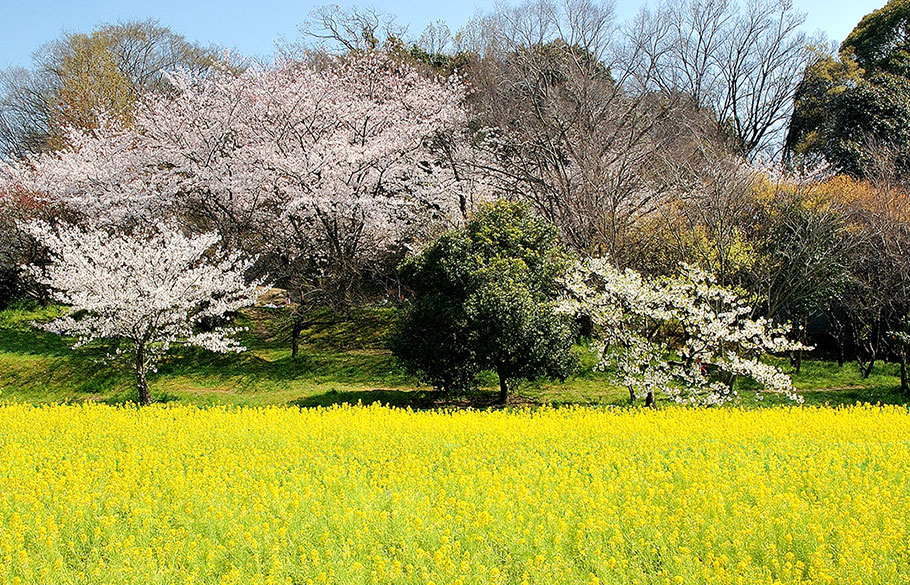
Approx.
1-minute walk
11:00
To Mahora Shiroyama, a museum
where you will get to know
Tsudo-shiroyama Kofun fully
Mahora Shiroyama
Mahora Shiroyama, the tumulus guidance facility that is near Tsudo-shiroyama Kofun, exhibits unearthed haniwa and earthenware, and explains the Tsudo-shiroyama Kofun in an easy-to-understand manner with illustrations and photographs. Excerpt from Fujiidera Tourism WEB, an official website of the Fujiidera City Tourism Association
Approx. 30-minute walk
11:40
The third largest
large keyhole-shaped tumulus
in the Furuichi Kofun Group
Chuai-tenno-ryo Kofun
Chuai-tenno-ryo Kofun
It is a large keyhole-shaped tumulus with a burial mound measuring 242m in length, and has a wide moat and a narrow levee. It is believed to have been constructed from the end of the 5th century to the beginning of the 6th century based on the haniwa unearthed from levees and so on. Hachizuka Kofun, which is believed to be a subsidiary burial mound, is found at the back circular part. The moat that is filled with water is visited by mallards in winter. If you look from the northwest corner, you will catch a glimpse of AICEL Shura Hall at the far left end, while if you look from the south-west side, you can see the beautiful Mount Nijo in the back of the right-hand side. Excerpt from Fujiidera Tourism WEB, an official website of the Fujiidera City Tourism Association

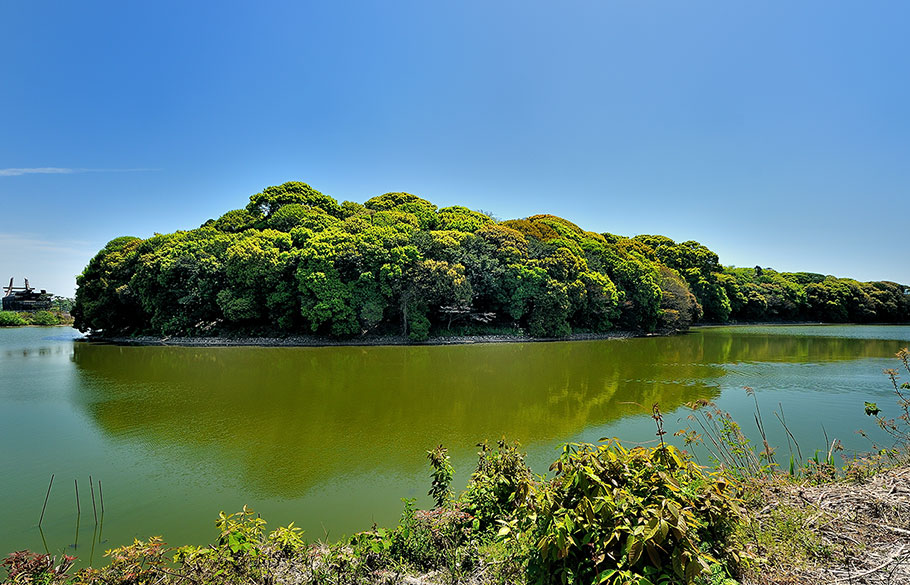
Approx. 7-minute walk
11:50
An impactful presence.
Go to the Historical Exhibition Zone!
Visit AICEL Shura Hall
AICEL Shura Hall
On the 2nd floor of the building, which features a ship-shaped haniwa and a shura (wooden sled), there is the Historical Exhibition Zone displaying excavated artifacts. There, visitors can learn the history of ancient Fujiidera from the Paleolithic Age, as well as observe the water bird-shaped haniwa, an important cultural property excavated from the Tsudo-shiroyama Kofun, and the ironware burial facility of the Nishihakayama Kofun. Also on display is a replica of the epitaph of Inomanari, a student studying in Tang, that was discovered in Xian, China. You can learn about the Japanese envoy to Tang China with it. Excerpt from Fujiidera Tourism WEB, an official website of the Fujiidera City Tourism Association
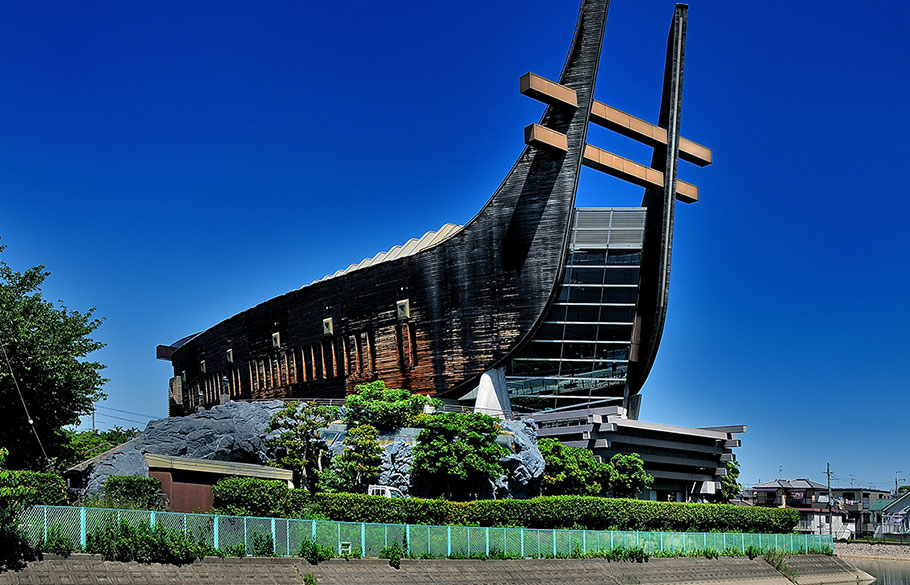
Approx. 20-minute walk
13:20
Ninken-tenno-ryo Kofun,
a kofun that possesses characteristics
of the new era among
the Furuichi Kofun Group
(Nonaka Bokeyama Kofun)
Ninken-tenno-ryo Kofun (Bokeyama Kofun)
The Nonaka Bokeyama Kofun (Hanyu Sakamoto mausoleum of Emperor Ninken) is 122 meters in length and is a keyhole-shaped burial mound with the front part facing southwest. It is constructed in such a way that the narrow part in the middle is slightly near the front, and it is surrounded by a moat and a levee.
It has a plane shape in which the width and height of the front part greatly exceed that of the back circular part, so out of all the tumuli in the Furuichi Kofun Group, this particular kofun shows characteristics of the new era.
The outer and inner facilities of the burial mound are unknown, but the cylindrical haniwa excavated from the levee is identified as leaves from six centuries ago.
In 1981, the Habikino Municipal Board of Education conducted an excavation survey on the slope bordering the outer bank on the northwest side of the front area, and they found the remains of two Haniwa kilns. The haniwa excavated from the ruins of the kiln had virtually the same characteristics as those excavated from the levee, so it was found that the construction of the kiln site was triggered by the construction of the Bokeyama Kofun. It can then be said that this is an extremely important result in clarifying the process of manufacturing and supplying haniwa accompanying the construction of the tumuli of great kings.
Excerpt from "Fujiidera/Domyoji Temple Monogatari, A City of History and Fragrant Greenery" from the Fujiidera City Tourism Site
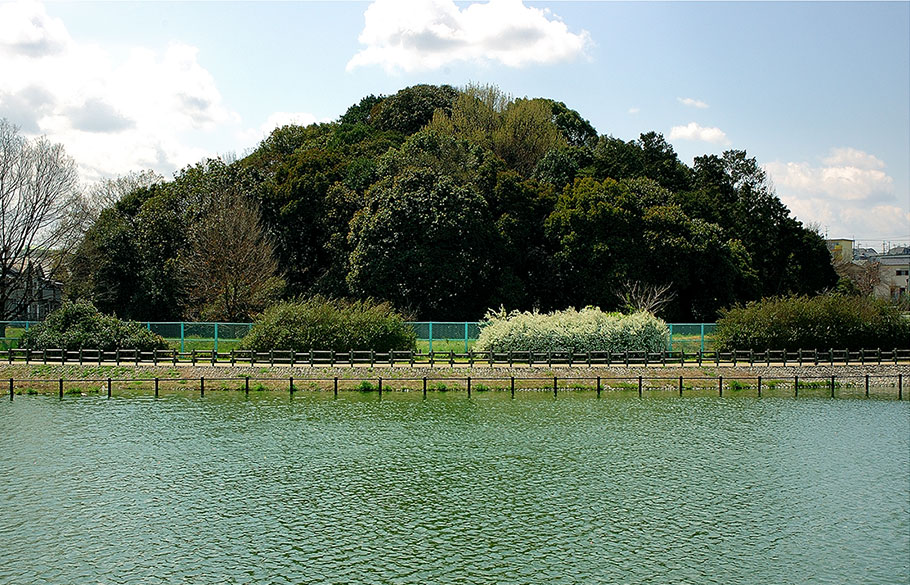
Approx. 5-minute walk
13:30
Minegazuka Kofun,
a kofun with double moats
surrounding the burial mound
Minegazuka Kofun
It is one of the few keyhole-shaped tumuli in the Furuichi Kofun Group where the internal facilities are excavated and researched. A lot has been discovered from the 12 excavations that accompanied the restoration and maintenance of the tumulus. The burial mound is 96 meters long and is built with two steps. Its outside facilities are surrounded by a double moat, except on the south side, while the grave area measures 168m from east to west and 148m from north to south. In the excavation and research that was done in 1991, many burial accessories which had been robbed from tombs were found in the newly discovered stone chamber near the top of the rounded rear mound. Among them were large swords with ornaments such as silver and rokkaku-sei (deer horn), as well as military burial accessories such as weapons, arms, and harness. There were also kanbo (cap-shaped crowns), iron belts, fish-shaped belts, silver hanging decorations, flower-shaped decorations, glass balls and stone balls. A total of 3,500 items were found. Excerpt from the Habikino City Hall website

Approx. 8-minute walk
13:50
Hakuchoryo Kofun,
from the Swan Legend
that originated in Habikino
Hakuchoryo Kofun
The Hakuchoryo Kofun is said to be the imperial tomb of Yamato Takeru no Mikoto. If you look at the burial mound across the surrounding moat, you will be treated to a magnificent view. Also, the enchanting street that runs through the north side of the kofun is said to be Japan's oldest national highway, the Takenouchi-kaido Road, and it is a famous spot that has been registered as a Japanese heritage site.
